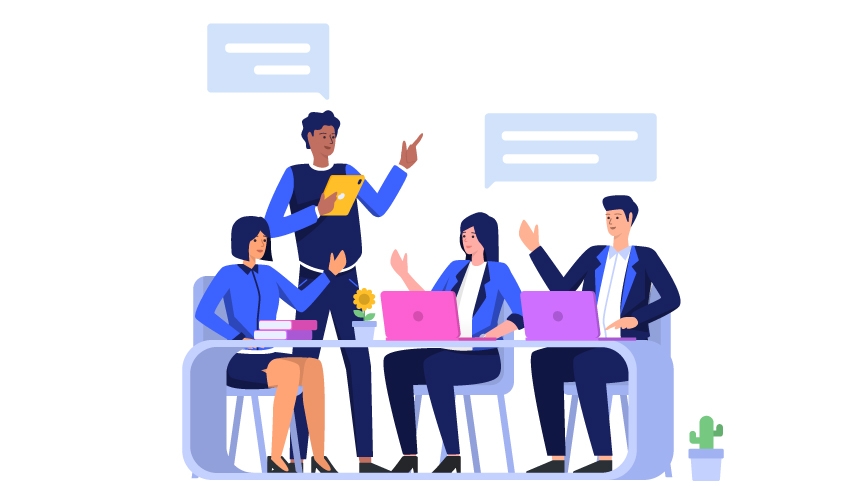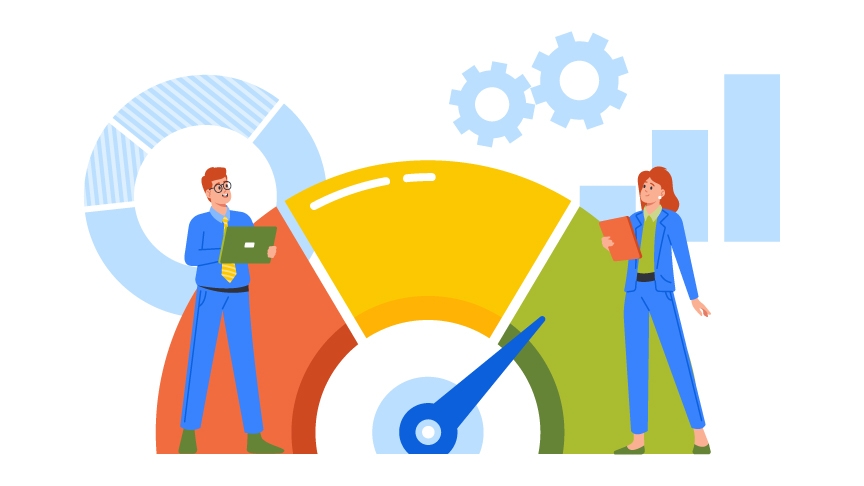Meetings
How to Enhance Communication and Efficiency in the Meeting Room
Shyam Nagarajan / Reading Time: 6 mins
Meetings are a crucial part of any organization's workflow. When run effectively, meetings can align teams, solve problems, generate ideas, and move projects forward. However, we've all experienced the frustration of wasted time in pointless meetings filled with disengaged attendees and no clear objectives.
With some preparation and intention, any meeting can become an engine for productivity and meaningful connection between colleagues. Follow these proven strategies to enhance communication and efficiency before, during, and after your next meeting.
Prerequisites For An Efficient Meeting Room
The success of a meeting starts well before attendees even enter the room. Setting the stage for positive participation and alignment to goals requires three key steps:
1. Set a Clear Agenda with Topics and Timing
An agenda serves as a roadmap for the discussion. Make sure to outline the meeting's purpose, topics to cover, and timing for each segment. Send the agenda out at least 24 hours in advance so attendees can come prepared. Highlight any pre-work, such as reviewing documents ahead of time.
2. Choose the Right Participants
Only include essential attendees. If someone doesn't need to contribute, consider excusing them to streamline the size. Keeping attendance around 5-8 people facilitates active participation. For larger updates, opt for other communication channels.
3. Make Logistics Easy
Send calendar invitations with the meeting goals outlined. Choose a room size where everyone can sit comfortably and see each other, as well as any screens or whiteboards. Test any virtual meeting technology ahead of time, and provide call-in numbers for remote attendees. Have snacks on hand if the meeting will run over an hour. The easier you make it for people to show up and focus, the more engaged they'll be.
How To Ensure Seamless Communication In Meeting Room?
Once everyone has gathered, keeping the communication flowing smoothly is critical.
Start the meeting on time and end on time to honor people's schedules and encourage focus. Open by reviewing the agenda and meeting purpose to realign everyone right away. Manage time by adhering to allotted times for each topic and move the conversation along if needed.
Encouraging participation from everyone in the room results in better ideas. Directly call on quieter team members for input. Clarify any decisions and action items after each part of the discussion by repeating back summaries to ensure alignment. Capture important agreements and next steps in real time on a whiteboard or in shared notes.
Close the meeting by recapping takeaways, decisions, and who owns each action item. Confirm understanding among the team before departing the meeting.
How To Optimize Room Setup for Engagement?
The physical meeting space impacts the energy in the room. Arrange seating so all attendees can see each other. If needed, have people sit at tables angled in toward the center of the room. In larger rooms, use microphones and speakers so everyone can hear clearly.
Position projector screens where visible to all and test equipment ahead of time. Provide writing surfaces like whiteboards or flip charts to capture ideas during the meeting. Have bottles of water available for lengthy meetings to keep people refreshed. For virtual attendees, position cameras so remote participants have a good view of the room and speakers.
Mastering Virtual Meetings
Video conferencing allows collaboration across distances but also presents unique challenges.
- Ask attendees to mute when not speaking to reduce ambient noise.
- Spotlight the current speaker so their video feed is large on everyone's screen.
- Use chat or hand raise features so people can join the speaking queue.
- Pause frequently for comments and questions since virtual audiences can disengage more easily.
- Ask if people need clarification more often since visual cues are limited on video calls.
- Share your screen to give everyone the same view when displaying slides, documents or other visuals.
Post Meeting Checks
The work doesn't stop once the meeting ends. Post meeting follow up is crucial. Send meeting minutes to all participants within 24 hours, summarizing discussions and spelling out decisions and action items.
Set deadlines for completing action items and have the accountable person provide status updates. Check in with attendees for feedback on what worked well and any suggested improvements for next time. Share relevant documents in a shared team site for ongoing access after the meeting concludes.
How to Measure Efficiency of a Meeting Room
It's important to assess whether your meetings are running efficiently. There are several key metrics to track:
Meeting length is an obvious indicator. If the allotted time is consistently exceeded, it likely signals inefficient pacing or lack of focus. Dig deeper into why meetings are running long. Is the agenda too packed? Are tangents or distractions derailing the discussion? Are timeframes for each topic unrealistic? Identify where time is being lost so the issues can be addressed.
Look also at attendance and participation levels. Large meetings with only a handful of vocal participants while others stay quiet can indicate inefficient use of time. People may feel their contribution is not needed. Evaluate whether some attendees could be excused to streamline the size. During the meeting, make efforts to draw out quieter team members.
Agenda adherence is another efficiency barometer. Does the actual discussion follow the outlined agenda or frequently go off track? Meeting leaders need to gently steer things back on course if tangents arise. An agenda helps keep things focused, but leaders should allow for organic conversation as long as the key topics are covered.
The completion rate of action items set during meetings provides important feedback. Are assignments being finished on time? Chronic issues finishing tasks signal meetings may not be providing sufficient clarity or follow through. Review next steps at the end of each meeting and set realistic deadlines, with cadence of status checks.
Last but not the least, collect participant feedback after meetings through quick polls or surveys. Ask targeted questions to rate engagement levels and satisfaction with the use of time. Consistently negative responses indicate a lack of efficiency. Seek open-ended input on improvements so issues can be diagnosed.
Monitoring these tangible factors consistently will reveal opportunities to tighten up meeting productivity. The goal is for participants to leave each meeting feeling it was a worthwhile investment of their time that moved initiatives forward.
Benefits of Maximizing Efficiency in a Meeting Room
There are compelling rewards to be gained from enhancing the efficiency of meetings in an organization.
First, more efficient meetings directly translate to increased productivity. When teams are aligned through well-run meetings with clear objectives, projects can progress faster. Less time is wasted bringing people up to speed. Accountability for action items is higher. Quicker pace of decisions and alignment accelerates work across groups.
Along with productivity gains, efficient meetings boost morale and motivation levels. Participants feel respected when their time is used intentionally and not squandered. They are more enthusiastic about contributing when discussions are purposeful. Meetings are no longer seen as energy-draining events.
Higher quality solutions can also emerge from efficient communication. With laser focus on agenda topics and broad engagement from the room, meetings generate sharper insights. Different perspectives get woven together for more innovative ideas.
Additionally, efficiency builds stronger collaboration across teams. When goals, roles and next steps are clear, trust and alignment grow. Future meetings become easier as groups establish shared understanding. Information flows faster cross-functionally.
Of course, shorter and more focused meetings also regain precious time back for individual work. Limiting meeting lengths to only necessary discussions gives time back for participants to concentrate on deliverables. Less calendar congestion eases scheduling.
Cost savings can accumulate from eliminating wasted time in bloated meetings. Hourly paid employees get more time for productive work. Operational costs of running lengthy meetings decrease. There is financial value in refining meetings for maximum efficiency.
Final Thoughts
Efficient meetings yield manifold benefits: productivity, innovation, trust, motivation, time savings and cost reductions. An abundance of rewards can be unlocked when meetings are thoughtfully designed, led, and followed up on for optimal efficiency.


